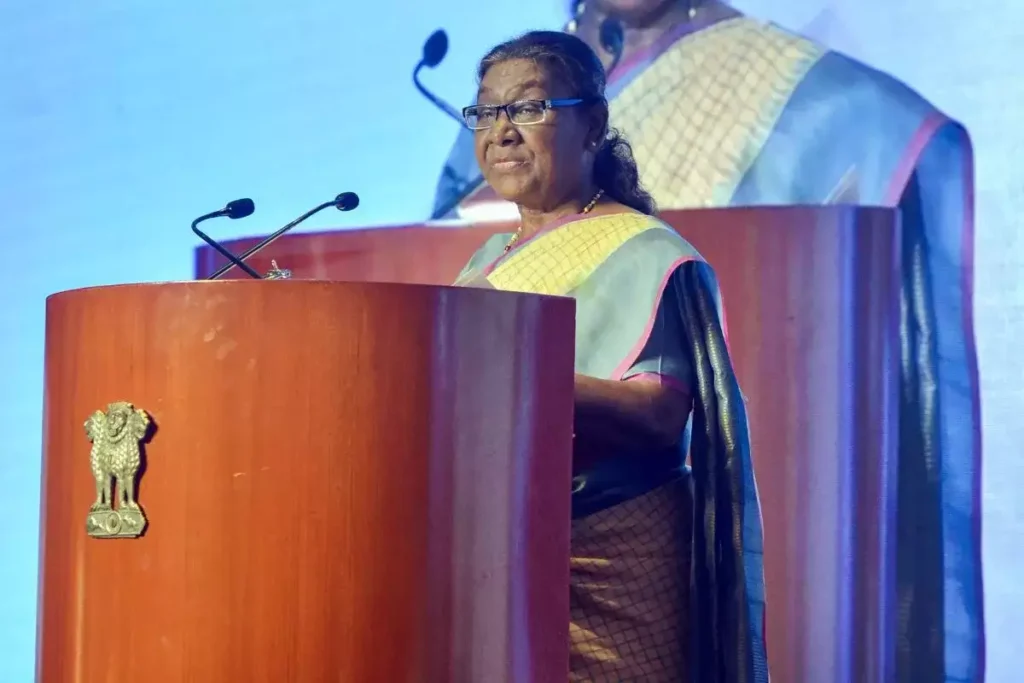The President of India during the inauguration of the 16th Assembly of the Asian Organization of Supreme Audit Institutions (ASOSAI) emphasized the role of Supreme Audit Institutions (SAIs) in ensuring inclusive digital public infrastructure.
Key Highlights of the Event
- The Assembly was organized by the Comptroller and Auditor General (CAG) of India.
- Discussions revolved around the critical role of SAIs in auditing and promoting inclusive digital public infrastructure.
- The event emphasized ensuring digital access for all, particularly for women and vulnerable sections of society, to reduce inequality.
About ASOSAI:
- The Asian Organization of Supreme Audit Institutions (ASOSAI) is a regional group of the International Organization of Supreme Audit Institutions (INTOSAI).
- Founded in 1979 with 11 members, now, it has 48 members.
- Its first Assembly and Governing Board meeting was held in New Delhi, India.
- ASOSAI focuses on:
- Knowledge-sharing among member SAIs.
- Capacity-building to enhance the auditing capabilities of its members.
- Collaboration to improve the effectiveness of public sector auditing.
Key Takeaways from the 16th ASOSAI Assembly:
- The assembly underscored the need for SAIs to address digital inequality.
- SAIs were urged to leverage emerging technologies for more efficient audits.
- Bilateral collaborations in public sector auditing were discussed, further strengthening the global audit community.
Supreme Audit Institutions (SAIs) and Their Role
- SAIs hold the responsibility to ensure transparency and accountability in the management of public resources.
- They play a crucial role in auditing public funds, thus safeguarding public confidence in governance.
Focus:
- SAIs must ensure that Digital Public Infrastructure (DPI) is:
- Inclusive: Designed and implemented to cater to all sections of society.
- Accessible: Ensuring that even vulnerable groups, such as women and marginalized communities, have access to digital technologies.
Importance of Technological Adaptation
- SAIs are tasked with keeping pace with technological advancements like:
- Artificial Intelligence (AI)
- Data Analytics
- Machine Learning
- Geo-spatial technology
- These technologies enhance the effectiveness and efficiency of auditing processes, allowing SAIs to perform oversight functions effectively.
Expanding the Scope of Audits
- The mandate of SAIs now includes-
- Evaluating public welfare schemes and projects to ensure they serve all citizens equitably.
- Ensuring efficient and transparent use of public funds in delivering essential public services.
Ref: Source
| UPSC IAS Preparation Resources | |
| Current Affairs Analysis | Topperspedia |
| GS Shots | Simply Explained |
| Daily Flash Cards | Daily Quiz |
Frequently Asked Question:
What is the role of the Asian Organization of Supreme Audit Institutions (ASOSAI)?
ASOSAI promotes knowledge sharing, capacity building, and collaboration among member audit institutions.
When was ASOSAI founded, and how many members does it have?
ASOSAI was founded in 1979 with 11 members and currently has 48 members.
What was the focus of the 16th ASOSAI Assembly?
The assembly focused on auditing inclusive digital public infrastructure and addressing digital inequality.
How do SAIs contribute to public sector governance?
SAIs ensure transparency and accountability in managing public resources by auditing public funds.
What technologies are SAIs encouraged to adopt?
SAIs are encouraged to use AI, data analytics, machine learning, and geo-spatial technology for effective audits.



